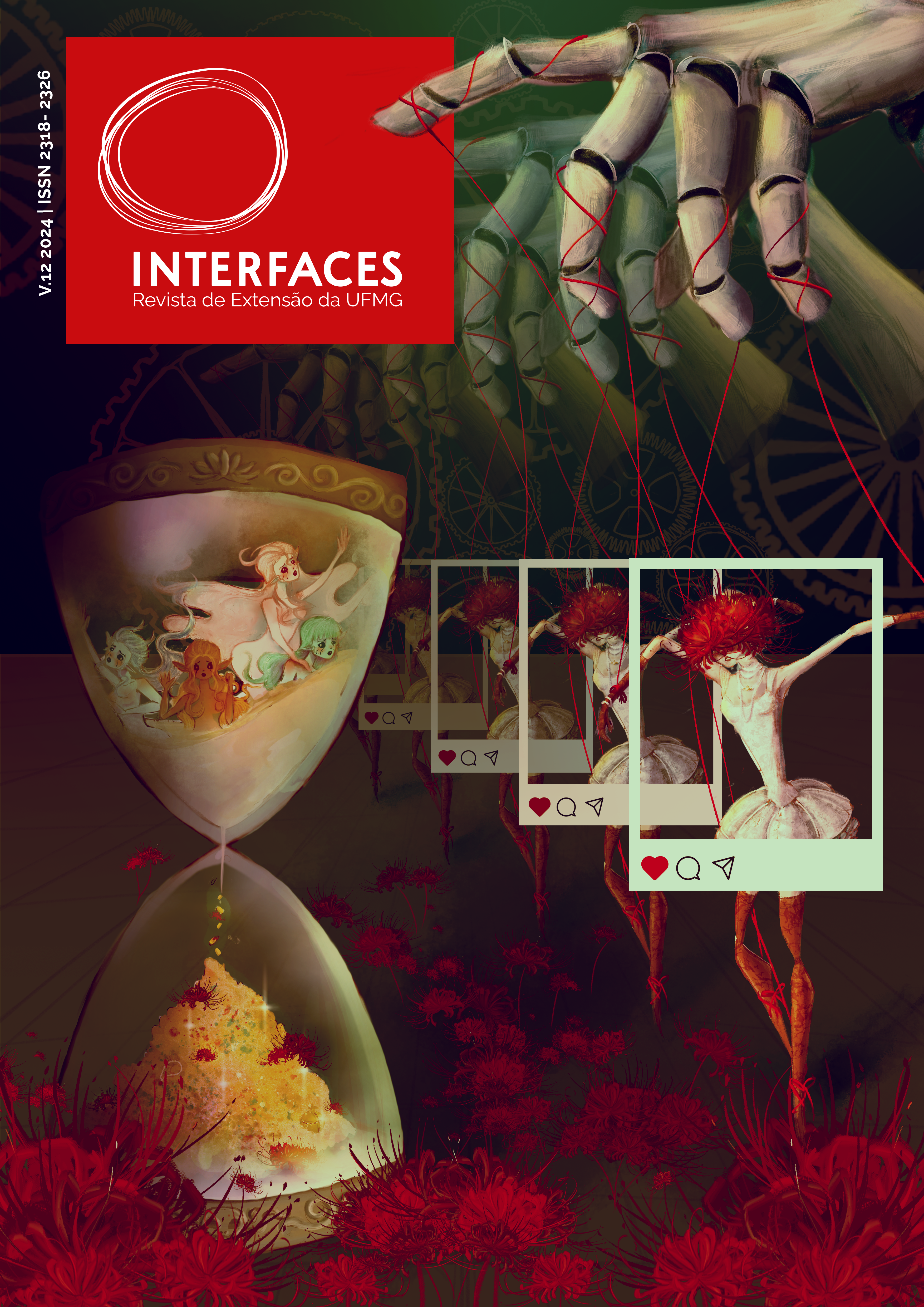CONTAÇÃO DE HISTÓRIAS INFANTIS NO CONTEXTO PANDÊMICO
UM RELATO DE EXPERIÊNCIA DO PROJETO DE EXTENSÃO “A HORA DO CONTO”
DOI:
https://doi.org/10.35699/2318-2326.2024.44804Palavras-chave:
Contação de Histórias, Pandemia, Projeto de ExtensãoResumo
Este texto decorre da experiência do projeto de extensão “A Hora do Conto”, desenvolvido no ano de 2021 e início de 2022, na Universidade do Estado da Bahia (UNEB), Campus XII, situada no município de Guanambi, Bahia. Este relato de experiência tem como objetivo apresentar as ações realizadas pelo projeto nesse período pandêmico e discutir os resultados obtidos sob a ótica do referencial teórico e da Política Nacional de Extensão. Primeiramente, organizamos um grupo de monitoras para contar histórias infantis nas escolas municipais de Educação Infantil. Em seguida, criamos um Grupo de Estudos composto pelas monitoras, estudantes de Pedagogia, professoras da Educação Básica e comunidade externa. Ambos funcionaram via mediação tecnológica através das Plataformas Teams e Google Meet. Os resultados obtidos nos surpreenderam por dois motivos: primeiro, porque os participantes do Grupo de Estudos ultrapassaram as fronteiras do estado da Bahia, alcançando também Minas Gerais e Ceará devido aos encontros serem remotos; segundo, pela parceria com o Departamento de Cultura Municipal ter prorrogado as ações do projeto até março de 2022, nos oportunizando romper com as barreiras da mediação tecnológica ao contarmos histórias presencialmente em espaços não escolares. Ampliou-se o contato com a comunidade e com um público diferenciado daquele que inicialmente nos propomos trabalhar.
Referências
Abramovich, F. (1991). Literatura infantil gostosuras e bobices. São Paulo: Scipione.
Ariès, P. (2014). História social da criança e da família. Tradução de Dora Flaksman. Rio de Janeiro: LTC.
Bettelhein, B. (2002). A psicanálise dos contos de fada. Rio de Janeiro: Paz e Terra.
Belinky, T. (2004). O caso do bolinho. Ilustração de Avelino Guedes. São Paulo: Moderna.
Busatto, C. (2003). Contar e encantar: pequenos segredos da narrativa. Petrópolis, RJ: Vozes.
Busatto, C. (2005). A arte de contar histórias no século XXI: tradição e ciberespaço. Petrópolis, RJ: Vozes.
Busatto, C. (2018). A arte de contar histórias no século XXI: tradição e ciberespaço. Petrópolis, RJ: Vozes, 2018.
Coelho, B. (1999). Contar histórias: uma arte sem idade. São Paulo: Ática.
Coelho, N. N. (1991). A literatura infantil: teoria, análise, didática. São Paulo: Ática.
Cunha, M. A. A. C. (1987). Literatura infantil: teoria e prática. São Paulo: Ática.
Forproex. (2012). Política Nacional de Extensão Universitária. Manaus: FORPROEX.
Machado, A. M. (2002). Bicho Folhagem. In Histórias à Brasileira: A Moura Torta e outras recontadas por Ana Maria Machado. São Paulo: Companhia das Letrinhas.
Machado, A. M. (2002). Festa no Céu. In Histórias à Brasileira: A Moura Torta e outras recontadas por Ana Maria Machado. São Paulo: Companhia das Letrinhas.
Machado, A. M. (2002). Dona Baratinha. In Histórias à Brasileira: A Moura Torta e outras recontadas por Ana Maria Machado. São Paulo: Companhia das Letrinhas.
Ministério da Educação. (2010). Diretrizes Curriculares Nacionais para a Educação Infantil. Brasília, DF: MEC/SEF.
Pessôa, A. (2018). Pedro Malasartes e o Fazendeiro. In Malasartes: histórias de um camarada chamado Pedro. Ilustração de Roberta Lewis. Rio de Janeiro: Lendo e Aprendendo.
Ruth, R. (2013). Bom dia, todas as cores. Ilustração de Madalena Elek. São Paulo: Salamandra.
Santana, D. R.; Reis, N. V.; Farias, J. O. (2021). Contação de Histórias Infantis na Extensão Universitária: um horizonte de possibilidades. Revista Em Extensão. Uberlândia, 01(20), 15-29. https://seer.ufu.br/index.php/revextensao/article/view/57690/32142.
Zilberman, R. (1987). A literatura infantil no Brasil. São Paulo: Global.


